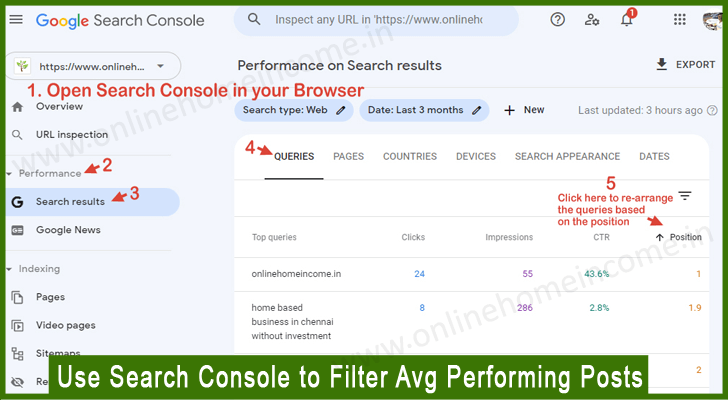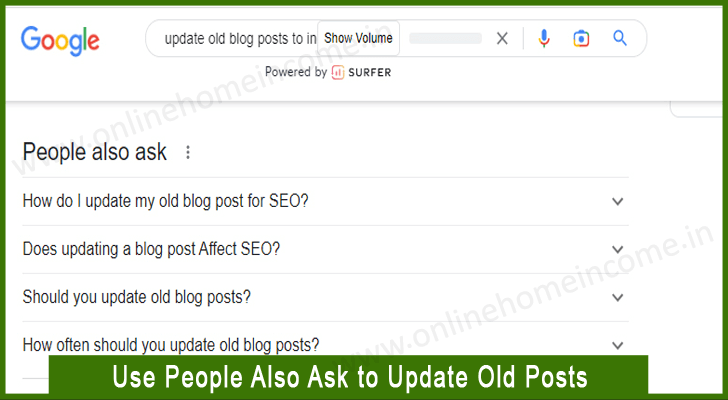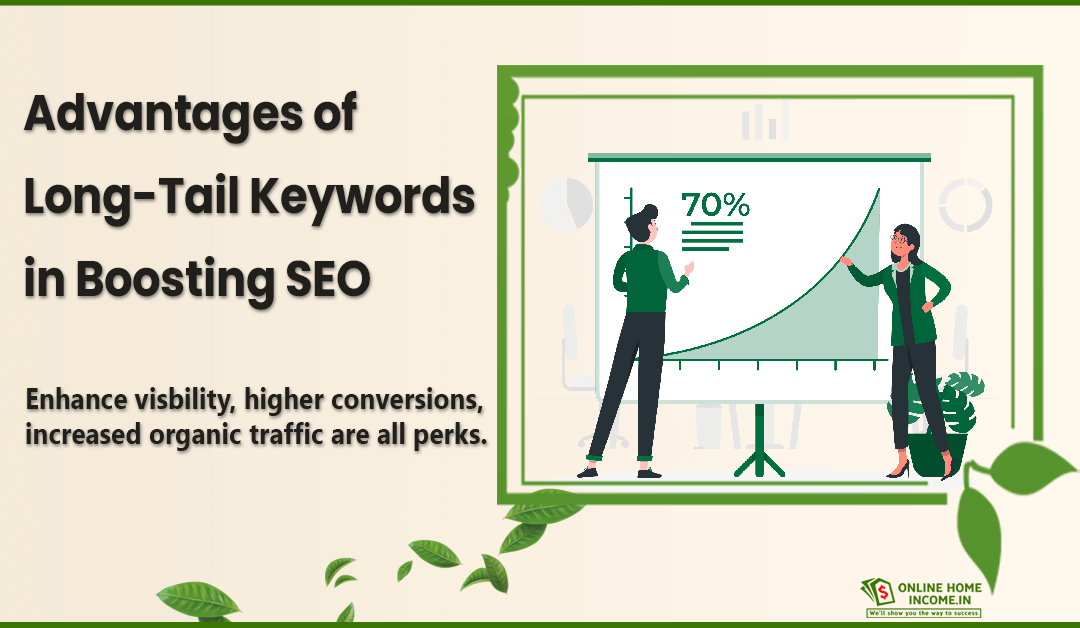In this post, I share 10 potential ways to update old blog posts for SEO, boost blog traffic, and increase the chance of first-page ranking. Refreshing older posts is essential in blogging, and do not avoid it. Learn why?
It is not always possible to rank every blog post on the search engine’s first page. In 2023, I spent long hours updating old blog posts to drive more organic traffic.
And this year also, I am going to continue updating already published articles on this blog. You can ask me why I am talking about this because I saw a sharp increase in blog traffic.
While many bloggers teach you to focus on producing more new content, I am just different. Well, it is a fact that you can get more results from overhauling existing blog posts.
If you keep publishing new articles consistently, you might end up with a backlog of old content. These contents have lost their importance by the time today.

AD
⇒ Does $10 a day in your bank will make you happy? If so, here is an exciting opportunity for you to start free.
⇒ All you need is a Smartphone with an Internet connection. | Join today!
You must check these articles at regular intervals to update them with fresh and new information.
You wrote a blog two years back, and it performed well. Many people visited your blog post, opened it, commented, and even shared it in their network.
As time flies, the information in the content becomes stale and no longer useful to the current readers.
Therefore, you need to revisit that old blog post and update it with the latest information.
You can either modify some parts of the article or as a whole.
Updating old blog posts regularly, or at times, is one of the most effective on-page SEO strategies in blogging.
Now, let us study the need for reviving old blog posts and the different implementation methods.
Why is it Necessary to Update Old Blog Posts?
Refreshing and reviving old content is an essential SEO strategy to get more blog traffic from search engines.
There are many potential reasons to republish old posts rather than just publishing new content.
1. Drive consistent traffic: The post that performed well in 2020 has fewer chances to hold the same organic position and traffic. To maintain steady traffic and growth, we must update the post with the latest information and remove stale content (outdated information).
2. Get more backlinks: As you know backlinks are an important ranking factor – re-optimizing old posts with the latest information helps you get more backlinks. No blog or website wants to link to outdated articles on your blog.
3. Grow authority and loyalty: Updating old articles with up-to-date information builds trust and authority. It will help grow more loyal readers and make them understand that we are not creating content just for monetizing it.
4. Google cares about your previous posts: Since Google aims to provide the most relevant and accurate information on the topic, updating old blog posts ensures your blog aligns with their ranking criteria. Google checks the freshness score on all published content.
5. Optimizing old content saves you time: Nowadays, it is very hard to find new blog post ideas and even harder to write SEO-friendly blog posts. Therefore, by updating and republishing an old post, you can reap the benefit of new content that has been published recently.
Now, let us find out how to choose the posts to update. What are the criteria to check in selecting the for updating?
How Can I Choose the Posts to Update?
Above, you have learned the importance of republishing or optimizing old posts on your blog.
Now, the other question is, how can I find the blog posts to update? How can I determine (what are the conditions or criteria)?
1. List pages with more backlinks: First preference should be given to the posts that performed well in the past and have a decent number of backlinks. Because these posts have lots of authority and by refreshing the page content, you can give a quick boost in ranking and traffic.
2. List pages with lots of keyword impressions: Google search console is a gold mine to dig these precious assets buried deep inside your blog. List the articles having a lot of impressions, and struggling to gain position. Revamp the article with persuasive content to give it a quick push.
3. List pages with the most traffic: Another category under updating old blog posts is listing the posts having the most traffic. Add fresh and updated information to serve the readers with the most useful knowledge (still matters today).
What Blog Posts Should I Update?
You can consider the below criteria as well. Remember that updating 20% of high-impact blog posts can drive 80% of your blog traffic.
- Blog posts that were published almost 6 months to 1 year ago.
- Evergreen content with outdated information.
- Articles that were getting large traffic once published, but not now.
- List the articles that rank higher on Google (on page two of Google).
- Identify blog posts that ranked well and now starting to slip.
Google has two free tools – Google Analytics and Search Console. You can utilize these two tools to find the list of blog posts to update.
You can use other tools like Semrush and Ahrefs to find the blog posts that require updating.

How Often Should I Update Old Blog Posts?
Now, another question is,
- How often should you update your old blog posts?
- Is there any set of rules (or strategies) to follow in blogging?
- What is a good frequency of refreshing old content?
- Is there any average lifespan for the content published on our blog?
I follow a general thumb rule of updating the posts every 100 days. For this, I maintain a report in an excel sheet to create reminders for overhauling these posts.
You now know that this post is published today, and I will update it again after three months.
A week back, I updated the years from 2023 to 2024 in order to maintain relevancy.
It is not necessary to follow the same strategy as updating the content depends on many factors.
For example,
- If the content does not change much, you can edit it once every year.
- Evergreen blog posts can be updated only once every year.
- Listicle posts need frequent updates (monthly or quarterly). For example, a blog post on the topic, “top 13 money-making apps” can be updated regularly.
- Step-by-step articles need to be checked and updated once every six months. Because if the article is about the software, the UI might have changed, and it needs a refresh.
10 Proactive Ways to Update Old Blog Posts
1. Consolidate Average Performing Blog Articles
It is a fact that not 100% of your blog posts rank on the first page of Google. As per the Pareto principle 80/20 rule, only 20% of your posts contribute 80% of the blog traffic.
Updating those posts at regular intervals can bring more traffic to your blog. It also helps you keep your blog cleaner (because you will now know zero-performing posts).
Removing the entire post that does not perform well improves your blog’s topical authority.
So, how to find the average-performing posts on our blog?

- Go to search console > performance > search results > queries and filter the posts for the below condition.
Filter the queries against the position from one. Carefully observe the queries till position 15.
It means the posts for these queries have the potential for first-page ranking, and all it needs is a little extra boost.
Export the results to an Excel sheet (or Google Sheets) and start overhauling them. These posts are your trump card.
Update the original post by adding more information. It has two benefits,
- The original blog post length increases and contributes to organic ranking.
- The trust among your readers grows since you are adding more value and actionable insights to those articles.
Note: Maintain a proper schedule and report in an Excel sheet. Update the blog posts only if there is a mandatory reason. Do not just update to manipulate the ranking algorithm.
2. Update Article Metatags having less CTR
The other set of blog posts that needs a refresh is the post with less CTR. CTR (Click Through Rate) is the number of clicks on a post divided by the total number of impressions and multiplied by 100.
From the first condition, you may have the list of blog posts ranked on Google (till page two).
Sometimes, even posts ranked on the first page will not get that much traffic.
One primary reason is that people see your blog post on Google search, but are not clicking your link in the snippet.
This is due to the reason that the meta tags are not well-written to attract readers. Though Google recommends your post, people are not willing to click.
It is a sign of caution, and you should update old blog posts’ meta tags to improve their CTR.
Do you know the importance of meta titles? Start optimizing it in a way that triggers curiosity and pulls people to click your link.
How do I know the posts need an update for their meta tags?
- Go to Google Search Console> performance > search results > pages and filter the results based on the ranking position.
Export the top-positioned posts (up to position 15).
Now, perform a Google search to find the top-performing blogs and observe their meta tags.
It will give you ideas to tweak the meta tags of your good-performing blog posts. Again, do not forget to maintain the report.
3. Include People Also Ask When Updating Old Posts
FAQ (Frequently Asked Questions) has gained momentum in recent days and dominated search results.
One most prominent ways to update old blog posts for SEO is by adding “people also ask” content as FAQ in your posts.
Do a Google search by using the keywords and look for the “people also ask” section.

Research and write an answer from your experience and knowledge for those questions and add them to your blog post.
You can either create a FAQ section or add those questions as a part of the content by elongating the blog post.
Make sure that you refresh old posts only if there is a purpose or if you feel the content needs more value.
Do not update only for changing the last modified date. It is of no use in your search engine ranking or SEO.
4. Update Fresh Information and Remove Stale Copy
The information keeps changing over time, and people want to learn new knowledge every single day.
For example, I wrote an article on How to start a YouTube channel and generate income by posting videos.
At that time, YouTube monetization rules were different and after a year, YouTube modified its rules.
Now, the information in that article become stale and outdated. So, I need to update old blog posts about starting a YouTube channel with new YouTube monetization rules.
It will happen to any posts on your blog. As a blogger, you need to stay up-to-date with the latest industry trends.
It helps you update the same in your blog, thus creating authority and trust among your audiences.
No one has having interest or time to read outdated information today. Therefore, you must update (refresh) old content at regular intervals.
5. Remove Broken Links (Internal and External)
You might have removed some articles or changed the URL for some posts after some time. Therefore, it is a must to check all the internal and external links when updating old posts.
You can use tools like Screaming Frog or even Google Search Console can do this better.
- List all the broken or irrelevant links, and update the post with an updated and relevant link.
Internal links help people to navigate various parts of your blog. It also increases the average user time on your blog.
Bounce rate is an important ranking factor, and you should keep working to control this value under 60% or less.
Adding relevant links inside the article puts readers roaming inside the blog. When people spend more time on your blog, the chances are high to rank better on Google.
Fixing broken links and updating relevant links are your primary activities when it comes to updating old blog posts.
Expert Tip: I follow a schedule of taking a link report (internal and external) every week. It helps me to learn what is happening on my blog.
You write a blog and add an external link to add more value to your readers.
Check the article after a few months to ensure that it has not been changed, modified, or removed.
Because you cannot control the external site content, it is at the sole discretion of the respective site owner.
If the content is changed (or becomes irrelevant) or removed, make sure you update (or remove) the external link in your post.
6. Modify the Article Layout to Meet the Latest Practices
Changes only do not change, and our blog is not an exception. Here, I am talking about the blog UX and UI.
Scenario 1:
When you started a blog a few years back, you might have installed the theme X. You design the blog with the features available inside the theme. Your blog looks and article structure may look perfect and meet past standards. Cross-check once this year (2023) – if it still remains to look good.
Scenario 2:
In the olden days, you focused more on text content and wrote a long text on the topic. You did not pay attention to different content types. Nowadays, people are not interested in reading long texts. So to increase engagement, update old blog posts with rich text, bullet points, images, infographics, etc.
Ensure the article is formatted according to the latest SEO practices, and the blog layout ensures user-friendly navigation and improved readability.
Integrating the questions from “people also ask” in your content improves your chances of getting placed in the featured snippets.
Therefore, update old blog posts at regular intervals to meet the latest SEO practices and Google guidelines.
7. Monitor Your Competitors and Observe What They Do.
Another popular way to update old blog posts for SEO traffic is by doing competitive analysis.
Create a habit of checking your competitor’s blogs regularly and learn their best practices and methods.
Learn how they do keyword research, what type of articles they publish successively when they update old content, etc.
List a few top competitors in your proximity (a maximum of 5 is enough). It will be difficult to follow a large list of competitors.
- Go to Google and search for the keywords to see which blog pages rank higher than your blog.
- Visit the blog and carefully review their article structure, placement of keywords, images, header tags, FAQ, etc.
- See what makes you stay behind them (or what is not there in your blog that they have)?
Probably you will get attracted to something that makes you read the entire content. Find the reason and implement it on your blog during the update.
8. Include New Keywords When Updating Old Blog Posts
While updating the old blog posts, prepare a list of new keywords to increase the ranking opportunity.
You can add relevant keywords (LSI keywords, long-tail keywords) and place (replace) them in the important section of our article. It includes title, headings, sub-headings, etc.
Do not try to manipulate the search engines. Ensure that you add keywords naturally and only to add value to your existing content.
This sends a good positive signal and increases the chance of ranking your old posts. You need to conduct a keyword audit before editing your old blogs.
9. Alter the Content to Align With the Search Intent
Google and other search engines work towards providing the most accurate results based on the user search.
We, bloggers, write articles for our audience. Therefore, we must make sure that every piece of content matches the user search intent.
Search intent is not a stable factor. It keeps changing over time. Therefore, the post may lose its importance and start to slip from its top-ranking position.
It applies to any blog, and the posts that performed well once may not give the same results after a few years.
Therefore, updating old posts to match the search intent is essential. You also need to make sure your blog posts align with the latest information and user intent.
Reconsider the user intent and add them to your post while updating it (new questions may arise, people want to address more relevant solutions, or it may be any other stuff).
All you need is to identify the most recent trends and developments – and add them to your posts.
10. Fix Typos and Grammar Errors to Improve Readability
We all do proofreading once before publishing a post. But sometimes, we may miss some parts of the formatting while publishing.
Though it does not have any severe impact on ranking, it is worth considering while updating your old blog posts.
Grammar mistakes and typos are common in content writing. On the other hand, you may have written some low-important sentences.
So, while refreshing your content a few months after you publish, remove these mistakes and stale content.
Ensure the article is well-formatted for skimmers and passes the Flesch readability test.
How to improve readability?
- Break long sentences into shorter ones. Ensure every sentence is not more than 18 words long.
- Use simple English words and make them precise and straight to the point. Avoid using jargon and complex words in your content.
- Add a sub-heading when a paragraph crosses more than 250 words.
- Use bullet points for lists and highlight important phrases (or sentences) through bold text and italics.
Finally, follow the best On-page SEO practice to improve organic ranking. There are no perfect blog posts, but you can re-optimize them to align closer to perfection.
Conclusion
Blogging is about publishing helpful content for people. It does not matter, if you are a travel blogger, food blogger, or write blogs on money management.
Every piece of information has some shelf life, and it needs to be updated. To stay ahead in this competitive blogging industry, we must ensure producing quality content.
It does not mean only publishing new content often. Updating old blog posts also increases content quality and helps to improve our blog ranking.
As every blogger aims for organic ranking, following best SEO practices, avoiding blogging mistakes, and implementing algorithm guidelines are essential.
When it comes to ranking for a keyword, content relevancy, and freshness have a crucial role.
Now, you have some idea of why is it important to update old blog posts for SEO.
Learning is a never-ending process, and continue reading on how often you should blog.
Parallelly pause publishing more new articles and allocate time to comb existing articles.
It will help you improve the reader’s experience and the SEO of your blog. It’s time to grow champ!







